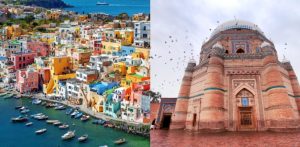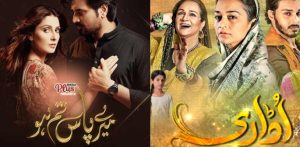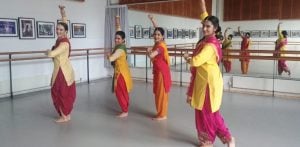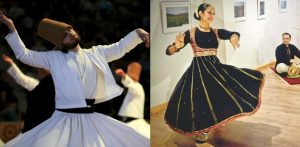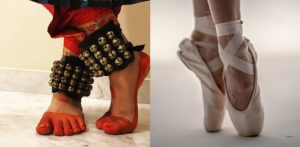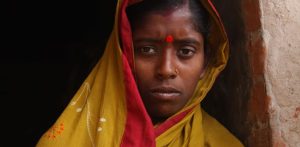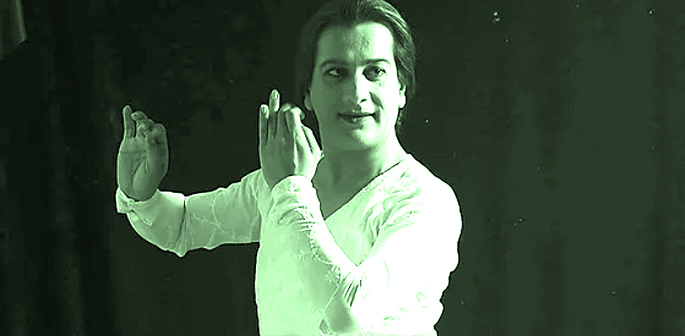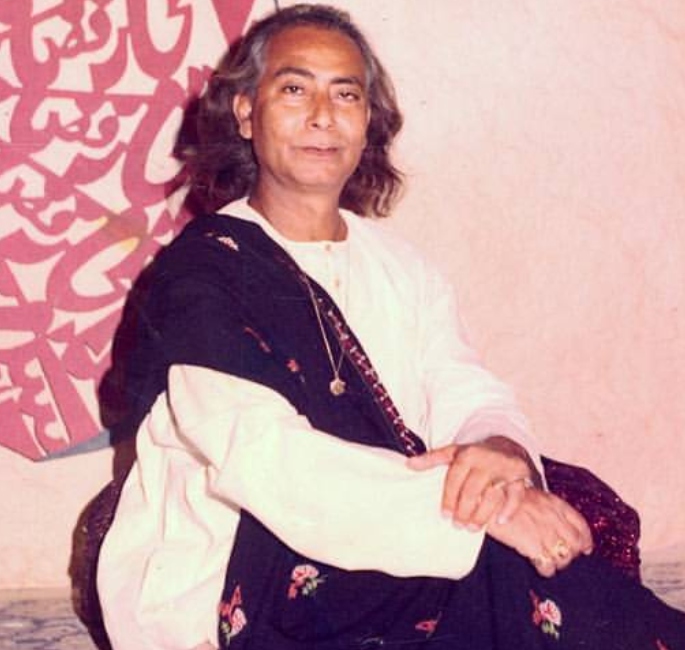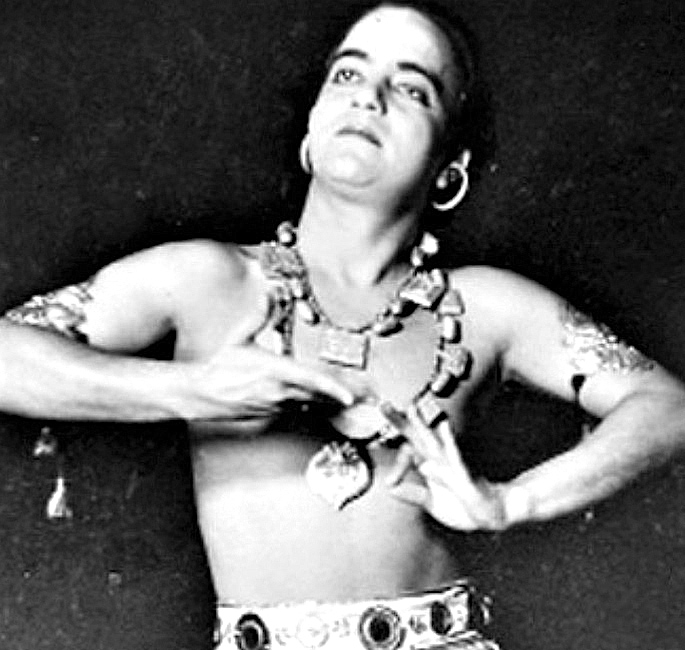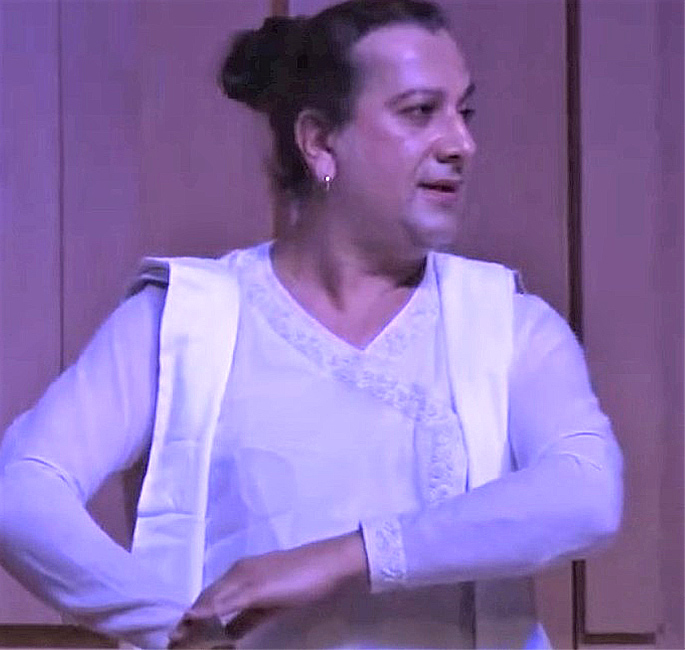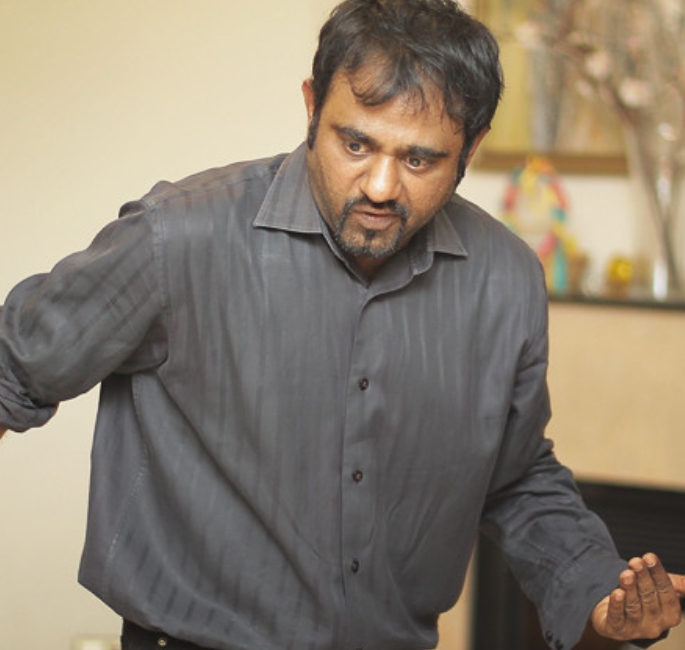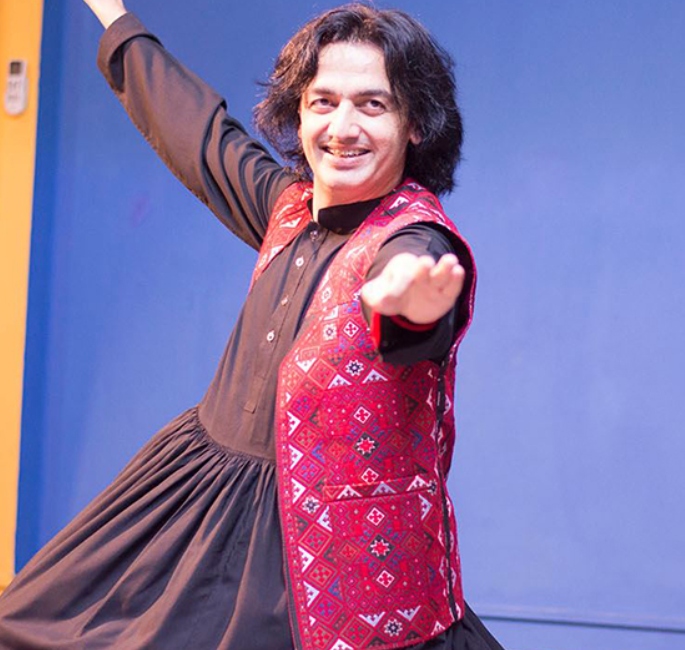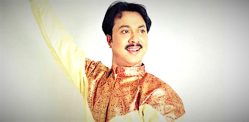"The dancer is a link between the cosmos and the audience."
Although male Pakistani dancers are quite rare to find, there is a historical foundation and talent that has gone unnoticed.
South Asian dancers are normally associated with bigger countries like India, especially in Bollywood. However, there is an abundance of richness, history and vibrancy that has come out from Pakistan.
From the traditional kathak dance forms to more unfamiliar styles like Persian afshari, the dancing industry is getting reimagined.
These creative, original and decorative movers have imprinted their names across various dancing forums. Though, it is their passion to change the criticism surrounding male Pakistani dancers that will leave many inspired.
These exceptional artists have refreshingly impacted dance, as well as infiltrated worldwide audiences.
DESIblitz dives into the six most magical performers who have and are still paving the way for a new framework of Pakistani dance.
Maharaj Ghulam Hussain Kathak
Maharaj Ghulam Hussain Kathak was a legendary male Pakistani dancer. Born in Calcutta, India in 1905, Ghulam was one of the catalysts of classical dance, especially in the kathak form.
His father was a good friend of philosopher, composer and poet, Rabindranath Tagore.
Therefore, it was inevitable that Ghulam was taught the strength of creativity in areas such as painting, writing and dance.
Originally, the talented performer was part of Agha Hashar’s drama company. Here, he saw the poetic influence within the arts from Agha, who was known for his Indian Shakespearean adaptations.
Having embraced how and why art is so powerful, Ghulam was enchanted with storytelling through performance.
Although, it was a performance from kathak megastar, Acchan Maharaj, which truly propelled Ghulam’s prowess.
Absorbing the intricacies and beauty of the kathak form allowed Ghulam to express his own personality through his choreography.
His spiritual motions, hand arrangement and emotive eyes illustrated cultural adventure and South Asian richness.
This impeccable sense of artistry awarded Ghulam with the title of ‘Maharaj Kathak’ in 1938 by his gurus. He then used this as motivation to excel the meaning of dance within South Asia, especially in Pakistan.
The dancer migrated there in the 60s after the partition, staying in Karachi and then moving to Lahore.
With a great amount of experience and teachings under his belt, Pakistan was already aware of the type of talent Ghulam had.
He began teaching classical dance to numerous students. Some remarkable alumni of his leadership include the brilliant Nahid Siddiqui and Nighat Chaudhry.
Lahore Sangat, a Facebook page celebrating the men and women of Pakistan encapsulated Ghulam’s finesse:
“He can dig laiy so deep which perhaps no one has been able to display in the past.
“Not many can maintain correct pace at a slow beat.
“As a teacher, he is an institution in himself and represents the glory of the past.”
Ghulam’s obsession with dance was influential and heartwarming. The precision and passion he put into his craft are monumental.
That is why the different avenues of media called upon his efforts. He acted also in the 1995 Pakistani film, Sargam. The movie won eight awards at the 1995 Nigar Awards, including ‘Best Supporting Actor’ for Ghulam himself.
After passing away in 2001, the ‘Medal of Excellence’ was bestowed upon him by the Pakistan Government.
This was to honour his services to the arts whilst acknowledging his triumphs in redefining the legacy of Pakistan dance.
Bulbul Chowdhury
One of the most poignant male Pakistani dancers was the infamous Bulbul Chowdhury.
Also known as Rashid Ahmed Chowdhury, he was born in 1919 in the Chunatai village during British rule. But, he later established himself in East Pakistan.
As a master within modern dance, Chowdhury was a pioneering figure in showcasing dance to a conservative Muslim community. The iconic dancer was highly educated.
Tutored in Arabic and Persian, Chowdhury went on to earn a bachelors degree in 1938 and then a Master of Arts (MA) degree in 1943.
Having studied his postgraduate degree at the University of Calcutta, the artist met dancing royalty such as Uday Shankar and Sadhana Bose.
The latter gave Chowdhury his big break. Interestingly, Chowdhury decided to change his first name to Bulbul in 1936 before his astounding performance in Tagore’s Kach O Devajani.
This was to keep his faith quite ambiguous, whilst avoiding any backlash from Muslim communities. In addition, it was this deception, which Chowdhury wanted to change through his dancing.
Of course, his majestic steps were adorned because of his passion. However, he saw the bigger picture, which was backward ideologies.
Therefore, blending folk stories, mythology and spirituality from South Asian cultures, his choreography broke down these barriers.
Additionally, this was emphasised in his most prominent drama, Anarkali.
The classical love story was adapted to suit a Muslim audience. They were slowly hypnotised with how stunning his craft really was.
Writer, Shamsuddoza Sajen, wrote in a 2017 article about the influence of Chowdhury:
“Bulbul appealed to the secular imagination of his contemporaries that dance has the potential to transcend the narrow religious divide.”
This emphasises how culturally powerful the dancing superstar was.
During the 40s, at a time of war and famine, Chowdhury shone again with a revolutionary spirit.
Noticing pain and turmoil, he again took to dance, gaining worldwide attention on the hardships that South Asia was facing.
Lest We Forget was an incredibly moving portrayal of the 1943 Bengal Famine, which was partly caused by British policies.
Furthermore, he also produced Quit India. This was a stark insight into India’s struggle for independence, highlighting all the figures who were fighting for freedom.
Chowdhury’s magnificent stance on such issues awarded him the prestigious title of the ‘National Dancer of Pakistan’ in 1949.
Although Chowdhury died in 1954, his message lives on. He was awarded Pakistan’s ‘Pride of Performance award’ in 1959 and Bangladesh’s ‘Independence Day Award’ in 1984.
His wife, Afroza Bulbul, founded Bulbul Academy for Fine Arts (BAFA) in 1955. This is an institution that popularises dance amongst conservative Bengali Muslims and helps promote open discussion.
Chowdhury’s extraordinary grooves and expressions helped audiences to realise the charm and delicacy of dancing.
Fasih Ur Rehman
One of the most talented male Pakistan dancers to derive from Ghulam Hussain’s teachings is Fasih Ur Rehman.
Born in Lahore, Fasih is a decorated dancer with over thirty years of experience within the kathak form. As with other dancers on this list, Fasih was captivated by the arts from an early age.
This interest would have been heightened due to this decorative family. Fasih’s brother, Faisal Rehman, is a famous Pakistani actor, whilst his uncle, Said Rehman Khan, was a legendary actor in Indian films.
However, Fasih’s entry into the arts was through a different type of performance – dancing. Immersed in the aesthetics of Maharaj Ghulam Hussain, Fasih started to observe the maestro’s lessons.
He quickly overcame the difficulty around kathak dance and started to perform with his idol. But he brought a unique aura on stage.
This is down to Fasih’s recognition of his craft, representing his culture and how the audience receives his spirit:
“Dance is not only beautiful dancing but communication. The dancer is a link between the cosmos and the audience.
“Every artist, be it a dancer, actor, painter, poet or musician, has to connect with something higher and convey that energy to those who observe the expression of their work.
“Dance is very powerful in this regard.”
This deeper meaning personifies Fasih’s presence when performing. Western audiences adored this refreshing vision.
Having called upon the guidance of Indian choreographer, Kumudini Lakhia, Fasih was stamping his authority worldwide.
In the 90s, he astounded onlookers in the UK with his lightweight movement. The artist then went on to conquer stages in Japan, Spain and Dubai.
He did receive opposition within Pakistan for his solo performances as many company’s wanted more female dancers with Fasih. However, he challenged this conception.
In his 2011 performance of The Dancing Afghan, he magically embodied both male and female energies himself. It was this beauty that solidified Fasih’s stardom.
He received the medal of excellence, ‘Tamgha-e-Imtiaz’, in 2006 for his untouchable commitment.
Fasih’s shifts of rhythm and seamless execution of gracious whirling are magnificent and highlight the elite level of male Pakistan dancers.
Having taken over the modern Pakistan dance scene, his teachings continue across Europe and Asia, including the UK.
Pappu Samrat
Pappu Samrat is one of the most important male Pakistani dancers. Born in 1970, he is a seasoned choreographer and comes from a historical dancing background.
His father, Akbar Hussain, was a Pakistani film choreographer. However, his grandfather, Ashiq Hussain, was one of the kathak kings.
Pappu practised classical dance forms, most notably in kathak which comes as no surprise. Although, the star has received dance insights in England and America and has perfected moves in the salsa form.
Fusing both his eastern and western influences, Pappu manages to depict an array of skills through his choreography.
He manages to make every limb groove to the tone and notes of the music. His body mimics a drum hit or if there is an elongated vocal note, his legs will personify that in the most cinematic way.
It is these attributes that Pappu has brought to the Pakistani film and TV industry. Having said that, the dancing mogul admits choreographing in the Pakistani film landscape is difficult:
“Here, not many films are produced and directors don’t let the choreographers work freely.
“Dancing is poetry of the body, but here it often becomes an exhibition of the body.”
Although, Pappu has drastically improved this due to his innovative techniques and artistic instructions.
He has influenced the creation of works such as Mujhe Chaand Chahiye (2000) and Main Hoon Shahid Afridi (2013).
Both of these pieces resulted in Pappu receiving the ‘Best Choreographer’ prize at the Nigar Awards in 2000 and the 2013 ARY Film Awards.
Pappu has made his mark on over seventy films, riveting audiences everywhere. They can clearly see his ancestral inspiration as well as the modern details that go into producing an enticing performance.
With no signs of slowing down, Pappu is a veteran within Pakistani dance and continues to astonish viewers.
Wahab Shah
Wahab Shah is a skilled and proficient male Pakistani dancer who was born on August 18, 1983, in Pakistan.
Despite Wahab growing up in Australia, his love and appreciation of cultural dance are clear to see.
The dedication of the artist shone when he obtained an acting degree at Technical and Further Education (TAFE) in Australia.
However, it was Wahab’s collection of professional training that really indicated how talented his dancing was.
Some of the notable training organisations were Mango Dance Studio in Sydney, Dance Central and Hands Heart Feet Dance Company.
These impressive experiences have helped Wahab to develop a unique style of sufi dance and in 2003, he helped set up the Eastern Flavaz Dance Company.
Working alongside Bollywood greats such as AR Rehman and Sonu Nigam, the artistic performer slowly emerged as the face of Pakistan dance.
However, what caught the eyes of the fans were Wahab’s distinct movements on stage. Fusing the dramatic sufi twirls with vivid hand movements and emotional head turns is a hypnotic celebration of South Asian dance.
Wahab has also stated the importance of showcasing dance in such a climatic way:
“We exist with the genuine desire to change the way Pakistanis see and experience greater forms of dance.”
“To stretch the boundaries of what dance can be and to share its power, beauty and humour with a broader audience.”
This sentimental and daring nature oozes through the dancer’s choreography. This was particularly the case in 2006 where the artist set up the Wahab Shah Dance Company.
This is the only Pakistan based dance company “producing an international standard of dance in Pakistan and beyond.”
Impressively, the company’s catalogue of success has been limitless. In 2016, they went on to represent Pakistan at the Art of Living festival in India.
Over a staggering 3.5 million people attended the performance, which featured a seven-acre platform.
Furthermore, in April 2017, Wahab choreographed the mesmerising dances performed at the 16th Annual Lux Style Awards.
His dance company also had numerous graceful hits at the Karachi Dance Festival and Lahore Sufi Festival. Having solidified his contemporary style of dancing, Wahab is sending shockwaves through the performing arts.
Khanzada Asfandyar Khattak
The empowering nature of Fasih Ur Rehman to popularise male Pakistani dancers has impacted the future generation of artists.
This is amplified by none other than Khanzada Asfandyar Khattak. The impressive mover hails from the Gumbat village in Kohat, Pakistan.
His last name, ‘Khattak’, descends from Afghanistan and is from a tribe famous for the Afghan dance, attan, otherwise known as khattak.
This type of genre was originally a war preparation exercise, performed using a sword and handkerchief.
However, before Khanzada was able to showcase the dance of his people, he first buried himself in Indian classical dance.
Although he started learning the fundamentals of traditional dance in 2001, it was during 2007 where he transformed. Under the supervision of iconic dance mogul, Indu Mitha, Khanzada learnt kathak and bharatanatyam.
His enchanting footwork and magnetic pirouettes created an innovative style of dancing.
Fusing his flair in classical dance forms with attan, Khanzada announced himself as one of the focal points of Pakistan dance.
Impressively, the artist also includes logari and Persian afshari dances in his choreography. This stylistic recipe is unbelievable and magnifies Khanzada’s relationship with this art form.
Having said that, it was this progression and success, which the dancer faced backlash for.
His family often criticised his craft due to their ancestral history of having tribal leaders. So, dancing deviated from that power. But this criticism did nothing to discourage Khanzada.
In fact, he uses the purity of dance in his work as a human rights activist in Islamabad:
“In my dances, I express the fight for women’s rights and human rights, and create awareness about injustice.”
This resilience speaks volumes within a culture that frowns upon male dancers. Although, Khanzada’s decorative work is questioning this ideology.
International audiences including Malaysia and Afghanistan adorn his magnificent skill set. As an instructor at the Pomegranate Garden Dance, Khanzada continues to promote his message of love and peace.
An Exciting Future
The industry has taken notice of these male Pakistani dancers due to their dedication to this art form. Different media avenues do celebrate South Asian dancers.
Although, people tend to overlook Pakistani dancers especially. This is due to a factor of reasons such as marketing and publicity. However, their talents are undeniable.
The way they encompass the historical value of classical dance forms but perform and teach them to modern generations is astounding.
The movement patterns, powerful footwork and spirited flow of these male Pakistani dancers is an enchanting experience.
If these dancers are anything to go by, then unquestionably, the future of Pakistan dance looks exciting.



